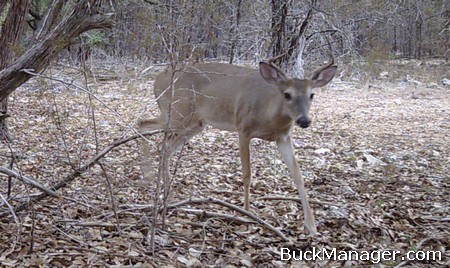Providing high quality habitat and good whitetail nutrition are some of the major building blocks of a successful deer management program. Regular readers of this site know that I stress this point constantly. Although the plant communities on a property can be manipulated to provide outstanding native forage for resident deer, even good habitat can “take it on the chin” during drought years like this one. Supplemental feeding can help struggling deer big time, but filling tags early in the deer hunting season is another way to “create” food for the remaining deer.
When it comes to individual animals having more food, it never hurts to eliminate the competition. This is why it’s always, always, always important to keep deer numbers in line with the available habitat. The past 12 months have been beyond dry here in Texas. So just like the commercial beef producers have been reducing their herds, it’s almost time for the deer hunters to step up to the plate and do the same to Texas’ whitetail. Pasture management and habitat management can be one in the same. Proper herd management, whether it be cow or deer, can moderate some of the impacts of drought—to both the animals and the plants they eat. After all, it will rain again someday. You just have to make sure there is something left to grow.

Source: “It doesn’t take a biologist to understand that drought has serious impacts on the state’s nearly 4 million white-tailed deer,” said Alan Cain, deer program leader with the Texas Parks and Wildlife Department. “Everything from antler quality, to fawn production and overall survival will be affected by the tough range conditions this year.”
“By reducing deer numbers early on, hunters can help ensure enough groceries will be available through the winter months,” Cain said. “As with many wildlife species the very young and the very old often have much more difficult times dealing with extreme weather events.” These stress periods are a way for nature to ‘thin the herd,’ especially in areas where deer populations are already exceeding the carrying capacity of the native range. As deer become stressed they are more susceptible to infections or other disease. Drought like this can be a contributing factor towards stress.”
The Texas deer hunting season opens Saturday, October 1, for bowhunting and November 5 for the general gun season. A special youth-only weekend season is set for October 29-30. The general season runs through January 1, 2012 in North Texas and January 15, 2012 in South Texas. A late youth-only season is also in the books for January 2-15, 2012, but I highly encourage everyone to not procrastinate on deer harvest this fall.
The deer will be hungry, so expect whitetails to be much more visible than last year and hitting feeders like clockwork right from the get-go. And yes, they will be thirsty too. Water is in high demand this year so take advantage of its deer-concentrating power and shoot some animals near water sources as well. During last year’s deer hunting season, Texas hunters harvested a record 688,000 deer. Cain predicted that record could be topped this year if conditions stay the same. I think he’s right. There should be a lot of brown on the ground, and rightfully so.